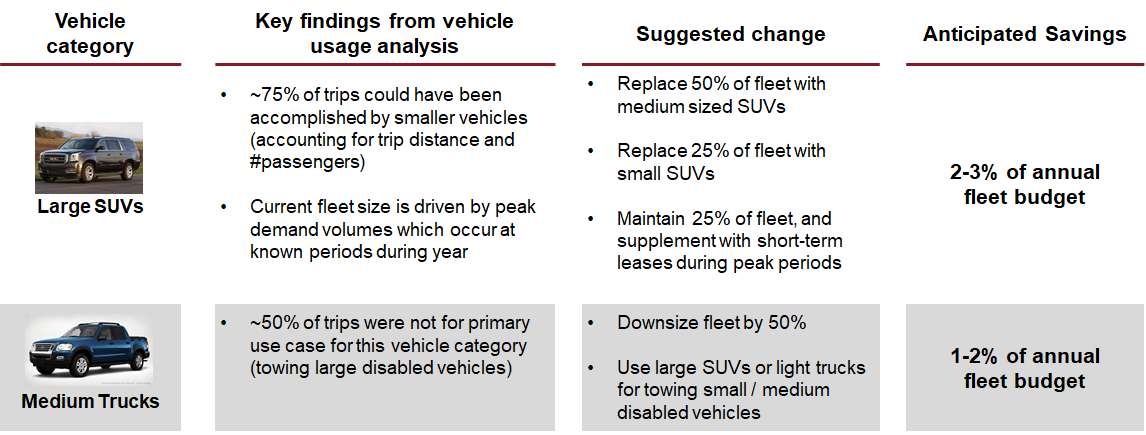Operational improvement and agency reform are top priorities for public sector leaders today. Simply doing less is not the answer. It is critical to first understand the true drivers of cost and inefficiency, and do so at a granular enough and actionable level – you need to “peel back the onion” to find operational improvement opportunities that can actually be executed upon. There are four actions you can take to get started on this today.
Operational improvement and agency reform are top priorities for public sector leaders today. With significant budget cuts, limited resources and hiring freezes, public sector organizations are coming under immense pressure to reduce inefficiency and improve mission delivery effectiveness by reforming the way their organizations are structured and operations are managed.
In an earlier post, we discussed how public sector leaders could instill a culture of operational excellence within their organizations. Here we discuss how executives can actively and continuously improve the way things are done to drive efficiency and effectiveness.
Simply doing less is not the answer. Public sector leaders will need to look beyond the usual annual across-the-board cost-cutting initiatives to drive sustainable operational improvements that do not compromise mission delivery. Achieving sustained operational efficiency requires eliminating waste and duplicative work not aligned with organizational strategy and mission priorities, streamlining activities / processes / systems, and better utilizing data to make smarter strategic and operational decisions. This requires an optimization of policies that dictate what work is done, the people, processes and systems to execute the work, and management mechanisms to drive continuous improvement.
It is critical to first understand the true drivers of cost and inefficiency. Most executives turn to performance benchmarking to identify potential improvement opportunities at a high-level. While this can be a useful first step, it also more often than not a moot exercise given the intricacies of most public sector operations, the lack of meaningful benchmarks, and the consequent risk of making decisions based on apples-to-oranges comparisons. In our experience, it is far more critical to first identify the true drivers of inefficiency at a granular enough and actionable level. Then executives can take action to change processes, systems and organizational behaviors to eliminate these inefficiencies, and put in place a performance management discipline that sustains the improvements over time.
The key words are “granular” and “actionable.” The devil lies in the details when it comes to rooting out inefficiency and waste. Too often, cost drivers are framed at such a high-level as to be useless from an implementation standpoint, with no guidance to executives on specific actions to be taken to address the inefficiency. For instance, what is a COO or CIO to do upon being told that there is “too much shadow IT” within their organization? It could well be that some IT activities need to be done by employees not formally within the IT organization in order to deliver mission outcomes. Or it could be a true instance of duplicative work that could be eliminated. And most likely, the answer lies somewhere in-between.
You need to “peel back the onion” to find operational improvement opportunities that can actually be executed upon. Specifically, there are four actions you should push your teams to take:
- De-average operating costs (Administrative, IT, Facilities, Fleet, etc.) and identify the true cost drivers, map these to specific mission outcomes enabled, eliminate cost line items that are not mission-critical, and reduce / optimize the remaining costs
- Define the chain of activities truly needed to deliver the organization’s mission, overlay this on what is currently being done, and identify and excise unnecessary / duplicative activities that can be eliminated without compromising mission outcomes
- Identify the discrete process steps and systems needed to deliver mission-critical activities, root cause the true drivers of inefficiency at each step, and optimize them to eliminate waste, remove bottlenecks and accelerate cycle times
- Instrument activities and processes by developing data-driven decision-making mechanisms to help managers and executives monitor progress and make smarter operational decisions
Frame the case for change through the lens of positive impact on mission delivery. Once improvement opportunities have been identified at the right, actionable level, you will still need to build organizational support to implement changes and realize the benefits. This can be particularly challenging in the public sector, where perceived risks to mission delivery effectiveness can often derail even the most innocuous efficiency improvement initiative. To overcome resistance to change it is critical for leaders to demonstrate a thorough grasp of the details, in terms of impact on mission outcomes – otherwise execution is doomed to fail.
For instance, Censeo helped a large Federal agency optimize its fleet and cut 7-10% from its fleet budget by managing and deploying vehicles more efficiently. This required not just a granular analysis of the agency’s fleet components, but very specific recommendations on how the agency could drive savings by using less expensive vehicle categories to perform the same functions without compromising mission delivery, as illustrated in the figure below.
How Censeo can help – Censeo Consulting Group is a strategy and operations consulting firm that, for the past 15 years, has been the premier source of operational excellence expertise for public sector and mission-driven organizations (and bureaus / offices and programs within them), helping them run their operations more effectively and efficiently, delivering better outcomes and lowering costs. We have used our proven approach for implementing the above actions across hundreds of engagements with dozens of clients, including nearly every Federal government agency. To date, we have consistently delivered 5-15X ROI to our clients across our operational improvement projects. Our seasoned team of experts can help you cut costs and improve outcomes regardless of where you are today.
Learn more about our Operational Improvement solutions




